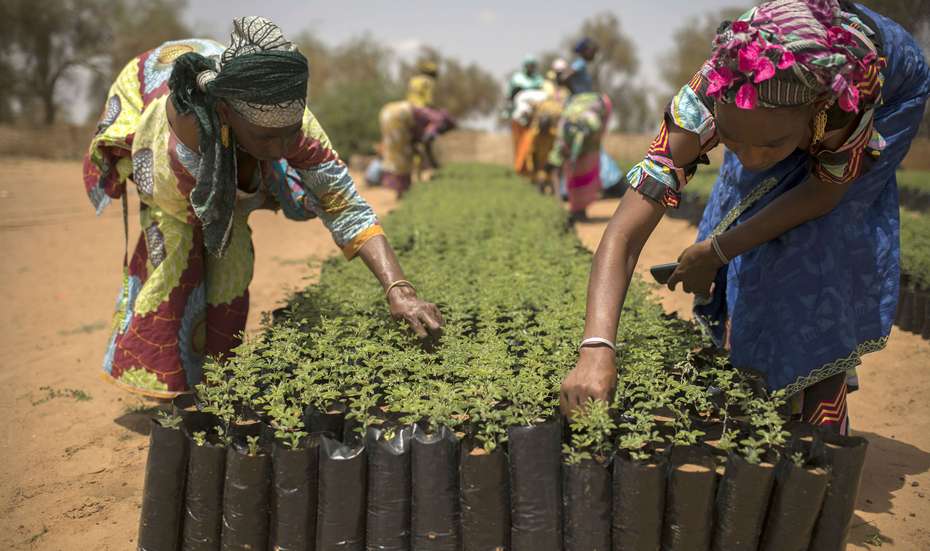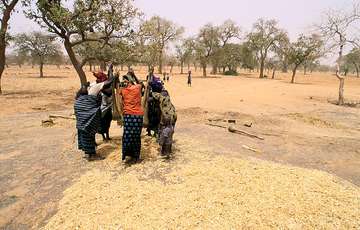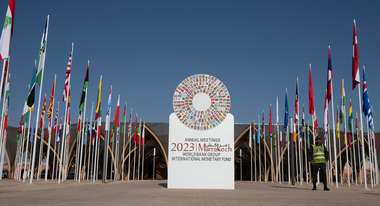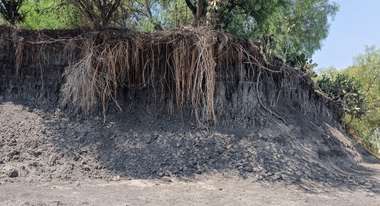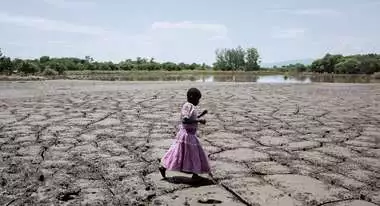Africa's Great Green Wall Initiative: current state and future perspectives
As conflicts are increasing in many places in the Sahel region and capacities for implementing the greening projects are lacking, only a fraction of the funds have been spent. What is needed now is readjustment and monitoring.
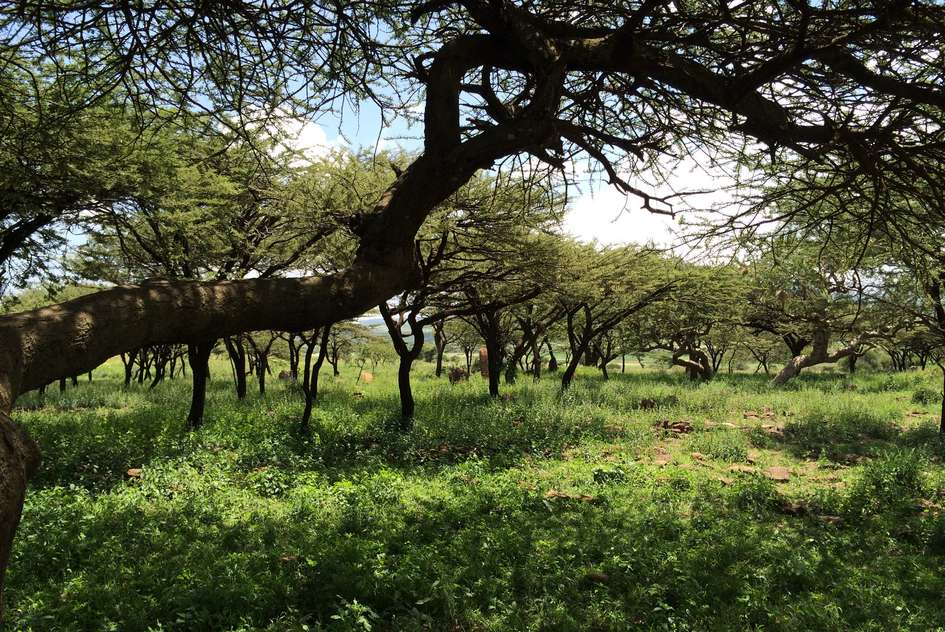
Land degradation in the Sahel region of Sub-Saharan Africa is undermining food security and local livelihoods. It is also exacerbating the vulnerability to climatic changes, especially among rural populations. Climate change is projected to reduce agricultural potentials and soil fertility in many parts of Africa in the future.
The resulting costs are substantial. Over the last two decades, the Sahel region lost on average US$ 3 billion ever year to land degradation. Nigeria and Ethiopia bore the highest share of these costs, mainly due to high levels of deforestation. Many different factors put land resources under pressure, including a growing demand for food and fuelwood, extensive slash-and-burn and insecure land tenure which prevents long-term investments in sustainable land management and restoring degraded lands.
Mono-cropping of cash crops (especially cotton) in several Western African countries and unsustainable practices among subsistence farmers have also contributed to the degradation of croplands. As a result, farmers are increasingly forced to move their croplands into grasslands which further fans conflicts and competition for land and water between pastoralists and sedentary farmers. These and other violent conflicts are also limiting restoration activities in the region making access unsafe to ecosystems that need restoration.
In 2017, the African Union launched the Great Green Wall programme to address land degradation and use ecosystems restoration as a catalyst for a broad development in the Sahel region. This ambitious initiative aims at restoring 100 million hectares of degraded ecosystems across 11 countries in the region, but also promote sustainable development and climate change mitigation. The local communities have great hopes and expectations from in this initiative.
Too little money and growing conflicts
To date, only a small share of the planned 100 million hectares are under restoration. According to an assessment published by the United Nations Convention to Combat Desertification, only around 4 million hectares had been under restoration by 2020 within the geographic focus of the GGW initiative, and 18 million hectares in the broader Sahel region.
The reasons for this relatively slow pace are complex, including lack of funding. Only about US$200 million were reported to have been spent under the GGW initiatives by 2021. Other constraints are a growing number of conflicts and limited capacities to implement land restoration activities. Moreover, insufficient knowledge about the economic costs and ecosystem benefits of different restoration strategies can often prevent from targeting significant investments effectively and efficiently.
During the One Planet Summit for Biodiversity in 2021, US$19 billion were pledged for the GGW initiative, of which about 80% are reported to have been programmed, i.e. developed into specific projects which are currently in the pipeline. While these financial commitments to the Great Green Wall are substantial, they will not be enough. An investment of about US$44 billion is needed to fund economically profitable and environmentally sustainable land restoration activities in the Sahel region.
But the expected returns are promising: every US dollar invested into land restoration yields on average US$1.2 in return. At most ten years are needed for land restoration activities to break even from the social perspective. And the resulting benefits will not only raise incomes and food security in the region, but also bring global public benefits in the fight against climate change.
Balancing ecosystem services and food security
The cost-benefit analyses of land restoration activities also show that the highest ecosystem benefits can be achieved by restoring forests that have been degraded to woodlands and shrublands. Looking at the relative costs and benefits of cropland versus grassland restoration, a more differentiated picture emerges. In areas with higher agricultural productivity, ecosystem services provided by restored croplands are likely to be greater, while in other regions, it can make more economic sense to convert low-productive croplands to grasslands if the total value of ecosystem services is considered.
This shows that targeting restoration activities is not purely a financial calculation, but needs to be guided by policy priorities that weigh up different ecosystem costs and benefits, including also food security priorities.
Indeed, the governments in the Sahel region have often prioritized food production. This is not surprising, given food security concerns and a lack of markets for most of the other ecosystem services, such as water regulation or biodiversity habitats. As a result, restoring lands other than croplands is much less economically attractive from the private sector perspective.
Generating revenue from carbon sequestration as part of global climate change mitigation efforts may offer an alternative source of income from land restoration in the future. To tap into this opportunity, countries in the Sahel region will require support to help them overcome substantial technical barriers which currently hamper their participation in global carbon markets, specifically in terms of benefiting from the application of Article 6 of the Paris Agreement.
Adjusting overambitious targets and enhancing monitoring
Finally, a number of other supporting measures would be needed to speed up the pace of restoration efforts. Many national policies set hugely ambitious targets and timelines which they cannot reach when the full funding fails to materialize.
The most vulnerable aspect of the GGW initiative is that it is highly dependent on outside donor support to reach its objectives fully by 2030. Examples from around Africa, for example Rwanda, clearly show that land restoration activities are more successful in achieving their targeted objectives when they are consistently programmed and primarily supported by national government budgets.
More realistic plans with manageable timelines are needed that are directly linked to available finance. Effective monitoring and evaluation systems are crucial, both at government and donor levels, to adjust programmes in light of regular feedback.
For more successful implementation of the GGW initiative, it would be essential to resolve currently widespread conflicts, strengthen state institutions and governance structures, and promote active civil society organizations.


Further information:
Mirzabaev et al. (2022) Economic efficiency and targeting of the African Great Green Wall. Nature Sustainability 5: 17–25. https://doi.org/10.1038/s41893-021-00801-8.
Mirzabaev et al. (2021) Land, climate, energy, agriculture and development in the Sahel: Synthesis paper of case studies under the Sudano-Sahelian initiative for regional development, jobs, and food security. ZEF Working Paper No. 204, Center for Development Research (ZEF), University of Bonn. https://research4agrinnovation.org/publication/sahel-synthesis/
